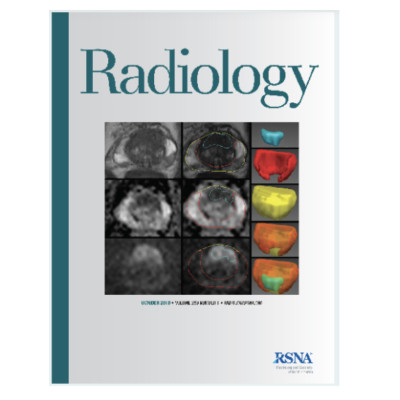Publication
Tumor Surface Regularity at MR Imaging Predicts Survival and Response to Surgery in Patients with Glioblastoma
J. Pérez-Beteta, D. Molina, A. Fernández, B. Luque, E. Arregui, M. Calvo, J. M. Borrás, A. Fernández-Romero, B. Luque, B. Meléndez, A.R. de Lope, R. Moreno, L. Iglesias, J.A. Barcia, J. Martino, C. Velasquez, B. Asenjo, M. Benavides, I. Herruzo, A. Revert, E. Arana, V. M. Pérez-García
Radiology 288(1), 218-225 (2018)
MOLAB authors
Abstract
Purpose: To evaluate the prognostic and predictive value of surface-derived imaging biomarkers obtained from contrast- enhanced volumetric T1-weighted pretreatment magnetic resonance (MR) imaging sequences in patients with glioblastoma multiforme.
Materials and Methods: A discovery cohort from five local institutions (165 patients; mean age, 62 years 6 12 [standard deviation]; 43% women and 57% men) and an independent validation cohort (51 patients; mean age, 60 years 6 12; 39% women and 61% men) from e Cancer Imaging Archive with volumetric T1-weighted pretreatment contrast material–enhanced MR imaging sequences were included in the study. Clinical variables such as age, treatment, and survival were collected. After tumor segmentation and image processing, tumor surface regularity, measuring how much the tumor surface deviates from a sphere of the same volume, was obtained. Kaplan-Meier, Cox proportional hazards, correlations, and concordance indexes were used to compare variables and patient subgroups.
Results: Surface regularity was a powerful predictor of survival in the discovery (P = .005, hazard ratio [HR] = 1.61) and validation groups (P = .05, HR = 1.84). Multivariate analysis selected age and surface regularity as significant variables in a combined prognostic model (P , .001, HR = 3.05). e model achieved concordance indexes of 0.76 and 0.74 for the discovery and validation cohorts respectively. Tumor surface regularity was a predictor of survival for completely resected patients (P = .01, HR = 1.90). Tumors with irregular surfaces did not benefit from total over subtotal resections (P = .57, HR = 1.17) but those with regular sur- faces did (P = .004, HR = 2.07).
Conclusion: Surface regularity obtained from high-resolution contrast-enhanced pretreatment volumetric T1-weighted MR images is a predictor of survival in patients with glioblastoma. It may help in classifying patients for surgery.















